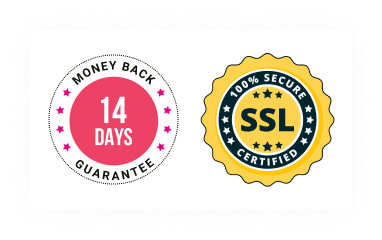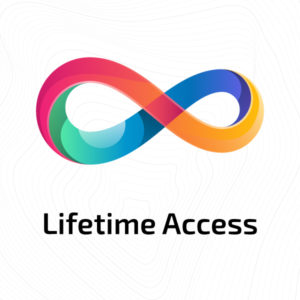Course Curriculum
| Unit 01: Course Outline and Introduction | |||
| Module 01: Introduction | 00:01:00 | ||
| Module 02: Who is this course for? | 00:01:00 | ||
| Module 03: What Will I Learn from this Course? | 00:01:00 | ||
| Module 04: What is CSharp (C#)? | 00:01:00 | ||
| Module 05: What is AutoCAD .NET API? | 00:01:00 | ||
| Module 06: What are the advantages of programming in AutoCAD .NET API? | 00:02:00 | ||
| Unit 02: .Net Framework and Visual Studio 2017 Community Edition | |||
| Module 01: Section Overview | 00:01:00 | ||
| Module 02:.NET Framework Architecture Overview | 00:03:00 | ||
| Module 03: .NET Framework Class Library, Common Type System, Common Language Runtime | 00:03:00 | ||
| Module 04: More about.NET Framework Common Language Runtime (CLR) | 00:02:00 | ||
| Module 05: Visual Studio 2017 Integrated Development Environment (IDE) | 00:03:00 | ||
| Module 06: Visual Studio 2017 IDE Demo | 00:07:00 | ||
| Unit 03: C# Fundamentals | |||
| Module 01: Section Overview | 00:03:00 | ||
| Module 02: DataTypes and Variables – Value Types (signed/unsigned integers) | 00:04:00 | ||
| Module 03: DataTypes and Variables – Signed and Unsigned Integer Demo | 00:06:00 | ||
| Module 04: DataTypes and Variables – Floating Point and Decimal | 00:02:00 | ||
| Module 05: DataTypes and Variables – Floating Point and Decimal Demo | 00:04:00 | ||
| Module 06: DataTypes and Variables – Boolean | 00:03:00 | ||
| Module 07: DataTypes and Variables – Reference Types | 00:03:00 | ||
| Module 08: DataTypes and Variables – Class Type | 00:03:00 | ||
| Module 09: DataTypes and Variables – Class Type – Demo | 00:11:00 | ||
| Module 10: DataTypes and Variables – Interface Type | 00:01:00 | ||
| Module 11: DataTypes and Variables – Array Type | 00:02:00 | ||
| Module 12: DataTypes and Variables – Array Type – Demo (Single Dimension) | 00:08:00 | ||
| Module 13: DataTypes and Variables – Array Type – Demo (Multi Dimension) | 00:10:00 | ||
| Module 14: C# Operators Overview | 00:02:00 | ||
| Module 15: C# Assignment Operators | 00:03:00 | ||
| Module 16: C# Assignment Operators – Demo | 00:06:00 | ||
| Module 17: C# Unary Operators | 00:02:00 | ||
| Module 18: C# Unary Operators – Demo | 00:02:00 | ||
| Module 19: C# Primary Operators | 00:03:00 | ||
| Module 20: C# Primary Operators – Demo | 00:07:00 | ||
| Module 21: C# Equality Operators | 00:01:00 | ||
| Module 22: C# Equality Operators – Demo | 00:02:00 | ||
| Module 23: C# Additive Operators | 00:02:00 | ||
| Module 24: C# Additive Operators – Demo | 00:01:00 | ||
| Module 25: C# Multiplicative Operators | 00:01:00 | ||
| Module 26: C# Multiplicative Operators – Demo | 00:01:00 | ||
| Module 27: C# – Relational and Type Operators | 00:04:00 | ||
| Module 28: C# – Logical, Conditional and Null Operators | 00:04:00 | ||
| Module 29: C# – Logical, Conditional and Null Operators – Demo | 00:07:00 | ||
| Module 30: C# Keywords (Reserved Words) | 00:04:00 | ||
| Module 31: C# – Conditionals Overview | 00:01:00 | ||
| Module 32: C# Conditionals – If-Then-Else Statement | 00:03:00 | ||
| Module 33: C# Conditionals – If-Then-Else Statement – Demo | 00:07:00 | ||
| Module 34: C# Conditionals – Switch Statement | 00:03:00 | ||
| Module 35: C# Conditionals – Switch Statement – Demo | 00:04:00 | ||
| Module 36: C# – Loops Overview | 00:04:00 | ||
| Module 37: C# Loops – For Loop | 00:02:00 | ||
| Module 38: C# Loops – For Loop – Demo | 00:02:00 | ||
| Module 39: C# Loops – Foreach Loop | 00:02:00 | ||
| Module 40: C# Loops – Foreach Loop – Demo | 00:05:00 | ||
| Module 41: C# Loops – While Loop | 00:02:00 | ||
| Module 42: C# Loops – While Loop – Demo | 00:02:00 | ||
| Module 43: C# Loops – Do While Loop | 00:02:00 | ||
| Module 44: C# Loops – Do While Loop – Demo | 00:03:00 | ||
| Module 45: Modifiers Overview | 00:04:00 | ||
| Module 46: Debugging Overview | 00:03:00 | ||
| Module 47: Debugging – Demo 1 | 00:05:00 | ||
| Module 48: Debugging – Demo 2 | 00:12:00 | ||
| Module 49: Debugging – Demo 3 | 00:06:00 | ||
| Module 50: Error and Exception Handling – Overview | 00:02:00 | ||
| Module 51: ExceptionHandling – Demo 1 | 00:07:00 | ||
| Module 52: ExceptionHandling – Demo 2 | 00:07:00 | ||
| Module 53: ExceptionHandling – Demo 3 | 00:13:00 | ||
| Module 54: Introduction to Object Oriented Programming (OOP) | 00:04:00 | ||
| Module 55: OOP – Encapsulation – Demo (Part 1) | 00:11:00 | ||
| Module 56: OOP – Encapsulation – Demo (Part 2) | 00:12:00 | ||
| Module 57: OOP – Inheritance – Demo (Part 1) | 00:07:00 | ||
| Module 58: OOP – Inheritance – Demo (Part 2) | 00:05:00 | ||
| Module 59: OOP – Polymorphism – Demo (Part 1) | 00:10:00 | ||
| Module 60: OOP – Polymorphism – Demo (Part 2) | 00:03:00 | ||
| Unit 04: Exploring AutoCAD .NET API | |||
| Module 01: AutoCAD .NET API – Overview | 00:01:00 | ||
| Module 02: AutoCAD .NET API Assemblies | 00:02:00 | ||
| Module 03: Using AutoCAD .NET API in C# – Hello AutoCAD Demo Part 1 | 00:12:00 | ||
| Module 04: Using AutoCAD .NET API in C# – Hello AutoCAD Demo – Part 2 | 00:04:00 | ||
| Module 05: AutoCAD .NET API Object Hierarchy | 00:03:00 | ||
| Module 06: AutoCAD .NET API – Application Object Overview | 00:03:00 | ||
| Module 07: AutoCAD .NET API – Document Object Overview | 00:03:00 | ||
| Module 08: AutoCAD .NET API – Database Object Overview | 00:03:00 | ||
| Unit 05: Creating AutoCAD Objects using AutoCAD .NET API | |||
| Module 01: Creating AutoCAD Objects using AutoCAD .NET API – Overview | 00:01:00 | ||
| Module 02: Creating a Line Object – Lab (Part 1) | 00:14:00 | ||
| Module 03: Creating a Line Object – Lab (Part 2) | 00:03:00 | ||
| Module 04: Creating a MText Object – Lab | 00:10:00 | ||
| Module 05: Creating a Circle Object – Lab | 00:07:00 | ||
| Module 06: Creating an Arc Object – Lab | 00:05:00 | ||
| Module 07: Creating a LWPolyline Object – Lab | 00:05:00 | ||
| Unit 06: Manipulate AutoCAD Objects | |||
| Module 01: Manipulate AutoCAD Objects – Overview | 00:01:00 | ||
| Module 02: Copy Object using C# – Theory | 00:01:00 | ||
| Module 03: Copy Object using C# – Lab (Part 1) | 00:11:00 | ||
| Module 04: Copy Object using C# – Lab (Part 2) | 00:02:00 | ||
| Module 05: Copy multiple objects using C# – Lab (Part 1) | 00:09:00 | ||
| Module 06: Copy multiple objects using C# – Lab (Part 2) | 00:01:00 | ||
| Module 07: Erase Object using C# – Lab (Part 1) | 00:06:00 | ||
| Module 08: Erase Object using C# – Lab (Part 2) | 00:05:00 | ||
| Module 09: Move Object using C# – Lab (Part 1) | 00:06:00 | ||
| Module 10: Move Object using C# – Lab (Part 2) | 00:02:00 | ||
| Module 11: Mirror Object using C# – Lab (Part 1) | 00:10:00 | ||
| Module 12: Mirror Object using C# – Lab (Part 2) | 00:02:00 | ||
| Module 13: Rotate Object using C# – Lab (Part 1) | 00:07:00 | ||
| Module 14: Rotate Object using C# – Lab (Part 2) | 00:03:00 | ||
| Module 15: Scale Object using C# – Lab | 00:05:00 | ||
| Module 16: Copy Object Exercise | 00:02:00 | ||
| Module 17: Copy Object Solution | 00:06:00 | ||
| Module 18: Erase Object Exercise | 00:02:00 | ||
| Module 19: Erase Object Solution | 00:07:00 | ||
| Module 20: Move Object Exercise | 00:02:00 | ||
| Module 21: Move Object Solution | 00:06:00 | ||
| Module 22: Mirror Object Exercise | 00:02:00 | ||
| Module 23: Mirror Object Solution | 00:06:00 | ||
| Module 24: Rotate Object Exercise | 00:02:00 | ||
| Module 25: Rotate Object Solution | 00:06:00 | ||
| Module 26: Scale Object Exercise | 00:01:00 | ||
| Module 27: Scale Object Solution | 00:05:00 | ||
| Unit 07: Exploring AutoCAD Dictionaries (Layers, LineTypes, TextStyles) | |||
| Module 01: Exploring AutoCAD Dictionaries – Layers Overview | 00:03:00 | ||
| Module 02: Listing all the Layers in the drawing using C# | 00:11:00 | ||
| Module 03: Creating a Layer in AutoCAD using C# | 00:09:00 | ||
| Module 04: Updating a Layer in AutoCAD using C# | 00:09:00 | ||
| Module 05: Turning the Layer On/Off in AutoCAD using C# | 00:05:00 | ||
| Module 06: Thawing/Freezing Layer in AutoCAD using C# | 00:04:00 | ||
| Module 07: Deleting a Layer in AutoCAD using C# | 00:03:00 | ||
| Module 08: Locking/UnLocking a Layer in AutoCAD using C# | 00:05:00 | ||
| Module 09: Assigning a Layer to an AutoCAD object using C# | 00:03:00 | ||
| Module 10: Exploring AutoCAD Dictionaries – LineTypes Overview | 00:01:00 | ||
| Module 11: Listing all the LineTypes in the drawing using C# | 00:07:00 | ||
| Module 12: Loading a LineType in the drawing using C# | 00:07:00 | ||
| Module 13: Setting the Current LineType in AutoCAD using C# | 00:03:00 | ||
| Module 14: Deleting a LineType in AutoCAD using C# | 00:03:00 | ||
| Module 15: Setting a LineType to an object using C# | 00:04:00 | ||
| Module 16: Exploring AutoCAD Dictionaries – TextStyles Overview | 00:01:00 | ||
| Module 17: Listing all the TextStyles in the drawing using C# | 00:08:00 | ||
| Module 18: Updating current TextStyle Font in AutoCAD using C# | 00:10:00 | ||
| Module 19: Setting the Current TextStyle in AutoCAD using C# | 00:08:00 | ||
| Module 20: Setting a TextStyle to an object using C# | 00:04:00 | ||
| Unit 08: User Input Functions | |||
| Module 01: User Input Functions Overview | 00:01:00 | ||
| Module 02: Using GetString Method – Lab (Part 1) | 00:13:00 | ||
| Module 03: Using GetString Method – Lab (Part 2) | 00:10:00 | ||
| Module 04: Using GetPoint Method – Lab | 00:12:00 | ||
| Module 05: Using GetDistance Method – Lab | 00:04:00 | ||
| Module 06: Using GetKeyWords Method – Lab (Part 1) | 00:12:00 | ||
| Module 07: Using GetKeyWords Method – Lab (Part 2) | 00:02:00 | ||
| Unit 09: Selection Sets and Filters | |||
| Module 01: Selection Sets and Filters – Overview | 00:02:00 | ||
| Module 02: Using SelectAll Method – Lab (Part 1) | 00:11:00 | ||
| Module 03: Using SelectAll Method – Lab (Part 2) | 00:02:00 | ||
| Module 04: Using SelectOnScreen Method – Lab (Part 1) | 00:06:00 | ||
| Module 05: Using SelectOnScreen Method – Lab (Part 2) | 00:01:00 | ||
| Module 06: Using SelectWindow Method – Lab | 00:08:00 | ||
| Module 07: Using SelectCrossingWindow Method – Lab | 00:08:00 | ||
| Module 08: Using SelectFence Method – Lab | 00:08:00 | ||
| Module 09: Using PickFirstSelection Method – Lab | 00:11:00 | ||
| Module 10: Using SelectionSet Filters – Overview | 00:01:00 | ||
| Module 11: Using SelectionSet Filters – Selecting Lines | 00:09:00 | ||
| Module 12: Using SelectionSet Filters – Selecting MTexts Lab | 00:07:00 | ||
| Module 13: Using SelectionSet Filters – Selecting Polylines Lab | 00:03:00 | ||
| Module 14: Using SelectionSet Filters – Selecting Blocks (FrenchDoors) Lab | 00:07:00 | ||
| Module 15: Using SelectionSet Filters – Selecting Blocks (BiFoldDoors) Lab | 00:04:00 | ||
| Module 16: Using SelectionSet Filters – Selecting objects in a Layer (Walls) Lab | 00:07:00 | ||
| Module 17: Using SelectionSet Filters – Selecting all objects in a Layer (Stairs) Lab | 00:05:00 | ||
| Module 18: Using SelectionSets and Filters – Exercises | 00:02:00 | ||
| Unit 10: Developing Title Block Project - Hands On! | |||
| Module 01: TitleBlock Project – Overview | 00:05:00 | ||
| Module 02: Creating Project and TBlock Class – Lab | 00:14:00 | ||
| Module 03: Creating Classes for each Paper Sizes – Lab | 00:07:00 | ||
| Module 04: Creating TitleBlock Class – Lab | 00:14:00 | ||
| Module 05: Handling User Selected Paper Size – Lab | 00:05:00 | ||
| Module 06: Creating the TitleBlock Border Lines – Lab | 00:06:00 | ||
| Module 07: Creating the Horizontal Partition Lines – Lab (Part 1) | 00:11:00 | ||
| Module 08: Creating the Horizontal Partition Lines – Lab (Part 2) | 00:05:00 | ||
| Module 09: Creating Vertical Partition Lines – Lab | 00:11:00 | ||
| Module 10: Project Check on the Partition Lines – Lab | 00:07:00 | ||
| Module 11: Creating the TitleBlock Labels – Lab (Part 1) | 00:10:00 | ||
| Module 12: Creating the TitleBlock Labels – Lab (Part 2) | 00:09:00 | ||
| Module 13: Creating the TitleBlock Labels – Lab (Part 3) | 00:11:00 | ||
| Module 14: Project Check on the Labels | 00:07:00 | ||
| Module 15: Creating Drawing Information Texts | 00:08:00 | ||
| Module 16: Debugging the TitleBlock Project – Lab | 00:10:00 | ||
| Module 17: Completing and Running the TitleBlock Plugin | 00:05:00 | ||
| Module 18: Audit Drawing Project – Overview | 00:02:00 | ||
| Module 19: Audit Drawing Project – Demo | 00:07:00 | ||
| Module 20: Creating the AuditDrawing Project | 00:11:00 | ||
| Module 21: Creating the AuditDrawing DisplayOnScreen Method | 00:14:00 | ||
| Module 22: Creating the AuditDrawing Write to TXT File Method | 00:08:00 | ||
| Module 23: Creating the AuditDrawing Write to CSV File Method | 00:06:00 | ||
| Module 24: Creating the AuditDrawing Write to HTML File Method | 00:14:00 | ||
| Module 25: AuditDrawing Plugin Demo | 00:04:00 | ||
| Module 26: Creating the AuditBlock Method | 00:05:00 | ||
| Module 27: Creating the AuditBlock GatherBlocksAndCount Method | 00:16:00 | ||
| Module 28: Creating the AuditBlock DisplayOnScreen Method | 00:06:00 | ||
| Module 29: Creating the AuditBlock WriteToTXTFile Method | 00:05:00 | ||
| Module 30: Creating the AuditBlock WriteToCSVFile Method | 00:05:00 | ||
| Module 31: Creating the AuditBlock WriteToHTMLFile Method | 00:07:00 | ||
| Module 32: AuditBlock Completed Component – Demo | 00:12:00 | ||
| Unit 11: Conclusion | |||
| Module 01: Conclusion | 00:01:00 | ||
| Assignment | |||
| Assignment – AutoCAD Programming Using C#.NET Level 7 | 00:00:00 | ||

0
0
Your Cart
Your cart is emptyBrowse Courses
Upgrade to get UNLIMITED ACCESS to ALL COURSES for only £49/year
Claim Offer & UpgradeMembership renews after 12 months. You can cancel anytime from your account.
Other Students Also Buy











 1 Year Access
1 Year Access 
 29 Students
29 Students  16 hours, 57 minutes
16 hours, 57 minutes 



